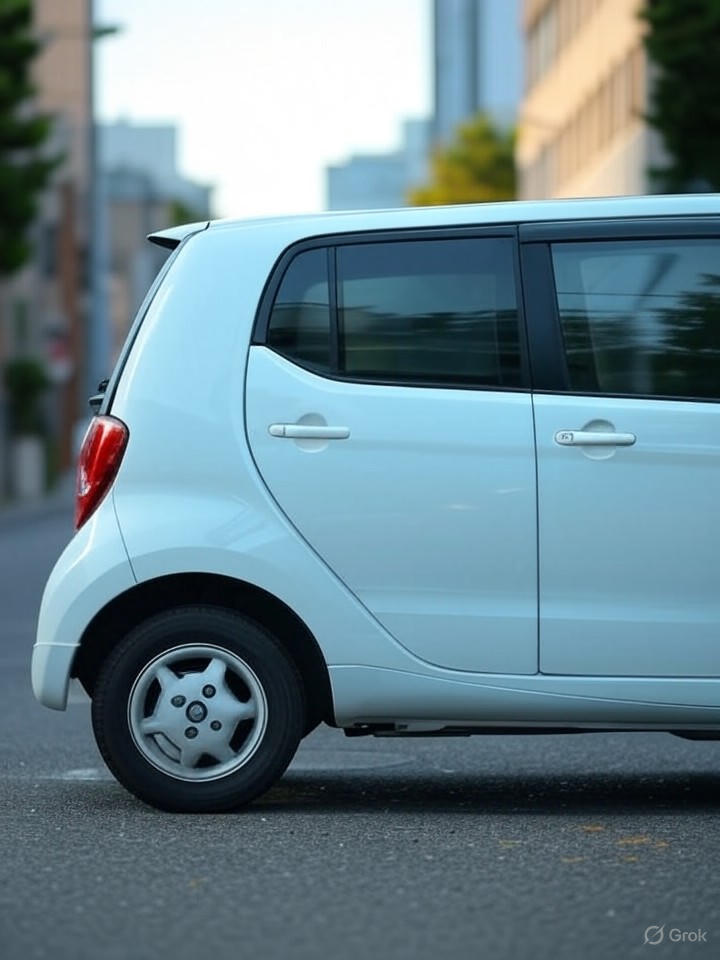In a move that underscores Honda’s push into compact electrification, the Japanese automaker has unveiled its smallest electric vehicle yet, the N-One e:, a diminutive Kei car that’s generating buzz for its blend of adorability and utility. Debuting officially in Japan, this microcar isn’t confined to local roads; Honda hints at broader availability, positioning it as a versatile urban mobility solution amid growing demand for efficient, space-saving EVs. With a design that evokes nostalgia while packing modern tech, the N-One e: features a boxy silhouette, a 245-kilometer range, and bidirectional charging capabilities that allow it to power household appliances or even an entire home during outages.
Details from the reveal highlight the vehicle’s practicality despite its tiny footprint—measuring just over 3 meters long, it’s ideal for crowded city streets. Equipped with vehicle-to-load (V2L) technology, the N-One e: can supply up to 1.5 kilowatts of power, turning it into a mobile generator for camping or emergencies, a feature that’s increasingly sought after in disaster-prone regions like Japan.
A Nod to Kei Car Heritage with Electric Innovation
Honda’s latest offering builds on the legacy of Kei cars, which are lightweight vehicles designed to meet Japan’s strict size and engine regulations, but the N-One e: elevates this category with zero-emission propulsion. According to reporting in Carscoops, the car delivers over 150 miles of range on a single charge, supported by a compact battery system that qualifies for government incentives under Japan’s Clean Energy Vehicles program. This not only reduces ownership costs but also aligns with global sustainability goals, as automakers race to electrify smaller segments often overlooked in favor of larger SUVs.
Industry analysts note that the N-One e:’s debut comes at a pivotal time, with compact EVs gaining traction worldwide. The vehicle’s interior prioritizes simplicity, offering options without a central infotainment screen to keep prices accessible—starting around the equivalent of $15,000 in Japan—while still including advanced safety features like automatic emergency braking.
Powering Beyond the Drive: V2L’s Broader Implications
The bidirectional charging isn’t just a gimmick; it represents a strategic pivot for Honda, enabling the car to integrate into smart home ecosystems. As detailed in Rushlane, this V2L capability allows users to draw power for devices up to 1,500 watts, potentially offsetting energy costs or providing backup during blackouts, a feature that could appeal to markets with unstable grids.
For industry insiders, this tech signals Honda’s broader ambitions in energy management, echoing innovations seen in larger models like the Prologue SUV. Yet, the N-One e: stands out for its accessibility, with a prototype showcased at events like the Goodwood Festival of Speed, hinting at international interest.
Market Potential and Challenges Ahead
While primarily targeted at Japan, where Kei cars dominate urban transport, Honda’s statements suggest expansion plans, potentially to Europe or other regions craving affordable EVs. Coverage from Auto Express describes it as a preview for a “Super EV” slated for the UK in 2026, indicating a phased global rollout that could challenge competitors like Renault’s Twizy or Citroën’s Ami.
However, scaling production and navigating regulatory hurdles remain key challenges. Battery supply chains and charging infrastructure gaps could temper adoption, especially in less developed markets. Still, with its cute aesthetics and multifunctional design, the N-One e: might redefine micro-mobility, proving that small packages can deliver big on innovation.
Honda’s Electrification Strategy in Focus
This launch fits into Honda’s aggressive EV roadmap, which includes prototypes like the Series 0 concepts unveiled earlier this year. As explored in TechRadar, these efforts emphasize futuristic styling and integrated operating systems, positioning Honda to compete with Tesla and emerging Chinese brands in the compact segment.
Ultimately, the N-One e: embodies a shift toward practical, everyday electrification, blending whimsy with functionality to attract a new generation of drivers. For automakers watching closely, it serves as a reminder that innovation in small forms can yield outsized market impacts, potentially reshaping urban transportation in the years ahead.




 WebProNews is an iEntry Publication
WebProNews is an iEntry Publication